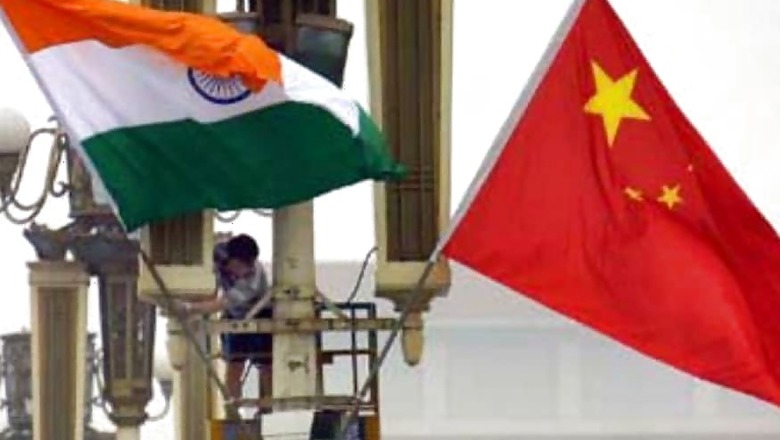
views
Prime Minister Narendra Modi and President Xi Jinping had an informal summit meeting in Wuhan on April 27-28. There was no agenda and no accompanying officials except the interpreters, in their “exchange [of] views on a range of issues of bilateral and global importance”. And as Modi said before his departure, “We will also review the developments in the India-China relations from a strategic and long-term perspective”.
How much to make of this? A great deal it would seem – because symbolism does matter – perceptions are indeed influenced and can be usefully harnessed.
Possibly, the need to review the bigger picture could have been a key objective, and possibly there would not be the time for this when Modi goes to China in June for the SCO Summit six weeks from now.
But it is clear that the 73-day military standoff between India and China in the Doklam area – currently a matter of dispute between China and Bhutan - in the summer of 2017, had prompted this new discourse about a “reset” in the India-China ties.
Indications that this “reset” was under serious consideration and discussion in the official circles were in evidence since the end of 2017 in statements, speeches, and meetings and then capped by the informal summit meeting that concluded today.
Clearly, there were some issues, emerging from Doklam that needed to be sorted out – the resolution of that crisis, the withdrawal of forces, such as it was, had been expedited by the apprehension that it would prevent Modi’s participation at the BRICS Summit in Xiamen.
In addition, we witnessed the two civilizational-states reaching a new low in the exchange of threatening words at official levels and making repeated references to 1962. The Chinese have since come back to the area they vacated and it is critical that we do not see a repeat of 2017 in the run up to the general elections in India.
But the seriousness of the Doklam crisis was enhanced by the steady downward trend over the past few years in the overall relationship. While it was largely conflict-free, the political comfort that had been carefully cultivated since the late 1980s had dissipated under heightened suspicions on both sides regarding the use of the Tibet card by India and the Chinese support to Pakistan.
Other irritants from India’s perspective such as the CPEC and China’s enlarging presence in our neighbourhood added more grist to the mills of suspicion.
Even the steadily expanding platforms at the bilateral level – economic, strategic and defence; the expansion of their engagement at regional multilateral forums, the converging of their interests in the new stage of economic globalization, etc, did not appear to address the seeming deadlock over issues at the bilateral level.
In other words, we have on the one hand a broadening, deepening and enlarging arena – bilaterally, regionally and globally – of India-China interactions and the consistent harping on the negativities and the “trust deficit” between them, on the other.
While the talk of “reset” or “rebooting of ties” is to be welcomed, the question to be asked is: how substantive can it be? Reset is unlikely to work if it does not go to the heart of the current structural problem of the unequal “rise” of the two Asian giants.
The framework of “rise” is inevitably constructed in zero-sum terms, exacerbated by the increasingly asymmetrical context. Hence the management of the relationship in the backdrop of China’s enlarging footprint in India’s neighbourhood has generated a highly abrasive strategic discourse, in which the bilateral irritants have acquired the status of ‘disputes’.
The problem has not been about the bigger picture – it has been reiterated at the highest levels ever since the late 1980s - but the question is about keeping it firmly in view.
No amount of statements emanating from the highest levels about how India and China are not a threat to each other or that their relations with third countries are not directed at each other, has dispelled the fog of suspicions – how then can the big picture be seen clearly?
Let me set out my own road map for this reset:
1. India-China bilateral relations have been adrift for quite a while now – the logic of setting aside the contentious boundary and improving the overall ambience worked only upto a point. It did succeed in convincing each other that neither side posed a direct threat to the other, but then imagination stopped. Instead of proactively taking the resolution forward, a passive phase of “management” of the border commenced. A bold step – the kind that Modi could take without being burdened by the factors that weighed with the UPA government – which would shed the historical baggage of the messy British legacy, is necessary. There should be both, willingness to settle and the need to educate public opinion on the benefits of a compromise regarding claims, which have dubious historical merit.
2. Secondly, the regional scenario: Our neighbours’ linkages and friendship with China continue to be deblitatingly judged by the yardstick of India-China antagonism. Furthermore, India does not have the kind of resources that enables China to contribute to the infrastructure development in south Asia – where our neighbours are focused on their development and modernization agendas.
Herein lies the opportunity to partner with China in transforming the physical and material reality in this poorest region of the world, rather than let it be interpreted in terms of a ‘dog in the manger’ attitude towards the role of outside powers here. An entirely new phase of south Asian regional integration can be inaugurated if we can correctly assess this change.
3. Thirdly, the great thing about the post-bipolar international order was the opportunity it provided to pursue relations with a range of countries simultaneously, without any particular tie-up being overtly (or very obviously) directed at any third country. It makes no strategic sense for India to be hustled, either by certain external powers or by the strident domestic demands for responding to the seemingly Chinese strong-arm tactics on the border, with an in-your-face geopolitics.
This is calculated to create further contradictions in the strategic context and in the understanding of the “big picture”. The new challenges posed by the Trump administration to the global economic order is of great concern to both India and China - as are a number of issues regarding the new emerging international regimes and the non-traditional threats. There is an enormous agenda here regarding which the only power with comparable interests in Asia are India and China.
Finally, Modi gave China – and Xi - yet another acronym for reducing suspicions and strengthening the people-to-people linkages - STRENGTH: Spirituality; Tradition, Trade and Technology; Relationship; Entertainment; Nature Conservation; Games; Tourism; Health and Healing – and it is certainly catchy. But the critical problem is that more than the trust deficit, what we have is an “information deficit” and a “communication deficit”.
Very little direct understanding or knowledge exists on either side about the other and therefore exacerbates the tendency to be judgmental. Verily, we fear what we do not understand. The blame always rests with the other side.
The lack of information is a result of the pitiable resources invested in this country on the study and research of China, which handicaps our scholars and researchers and has resulted in an extremely shallow understanding of each other’s history and culture. As the External Affairs Minister Sushma Swaraj told Wang Yi during her visit to China last week, we need to learn each other’s language so that we can communicate with each other directly.
(The author is professor at Centre for East Asian Studies. Views are personal)

















Comments
0 comment